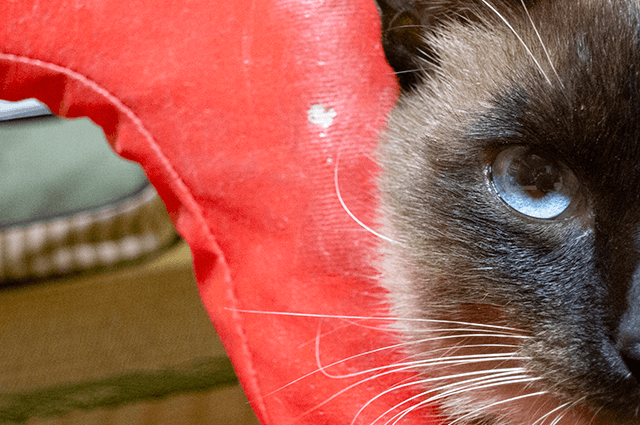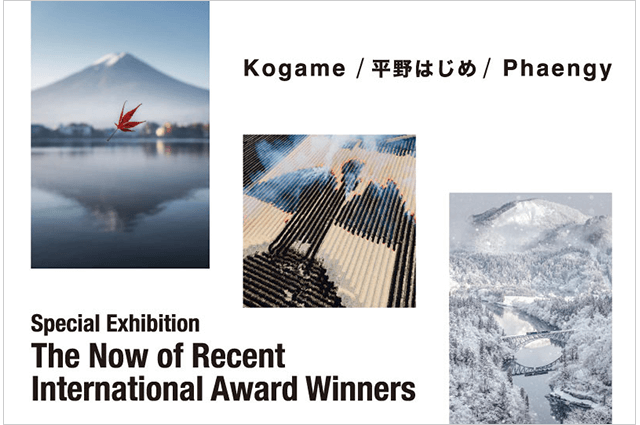Video Exhibition of Naomichi Kaneko / Shinobu Kii / Elica Masuya This Cradle -If I Could-
- Dates
- Friday, February 7 - Thursday, February 20, 202511:00~19:00
* Closed on Tuesday, February 18
Naomichi Kaneko Profile

Born in 1985 in Tsuchiura City, Ibaraki Prefecture, Japan. While working as a speech-language therapist and licensed psychologist at a hospital, Kaneko creates photographic and video works exploring the theme of dialogue with people and nature.
Exhibitions, Publications and Awards
- May 2024: Contradiction – Listening to the Voice of Photography (Web Exhibition)
- February 2024: Excellence Award for YORII SUMMER – Yorii Town City Promotion Video Contest
- July 2021: Child of the Universe – Peel the Onion Exhibition at LE DECO Gallery
- November 2019: Hatching – Photomontage Work at 72 Gallery
- July 2019: Daily Foam, Interwoven Trails – Photobook
Title:
Snow in March

When it snows, a profound silence fills the air. This silence comes from sound vibrations being absorbed into the gaps between the snow. I cherish this stillness.
In recent years, I feel that snow has become less frequent. The winter spanning late 2023 and early 2024 was unusually mild. Although there were brief periods of heavy snowfall, overall snowfall in northern Japan was below average, and cherry blossoms bloomed later than usual nationwide. The changing patterns of the seasons are becoming more noticeable in our daily lives.
According to projections by the Japan Meteorological Agency (JMA), both the annual maximum snow depth and total snowfall in most regions of Japan are expected to decline significantly between 2076 and 2095, with decreases of up to 70% compared to the late 20th century.
Through this work, I seek to preserve the memory of this beautiful phenomenon for the future by reversing the irreversible rhythms of nature.
Video Duration: 4 mi 11 s
Music: "Sphere" by MUUA
Production Date: March 2024
Born from the Wind

When I stepped outside with my camera, I was captivated by the shimmering moonlight dancing on the sea, the rustling flowers swaying in the wind, the gentle murmur of a river, and the shadows cast by sunlight filtering through the trees. These elements constantly transformed their shapes and sounds, influenced by the weather and their relationship with life. Always vibrant, unhurried, and free—a world in perfect balance. Each element observed, listened, and responded to the others. As I quietly watched this dynamic cycle of change, I felt as though I was dissolving into it.
I wanted to translate this sensation into a work of art.
In quantum mechanics, this phenomenon is referred to as "fluctuation." The flickering of light, the ebb and flow of the wind, and even our heartbeat and breath embody the nature of fluctuation. When our brains resonate with these fluctuations, we experience a sense of comfort.
It is believed that the universe itself was born from fluctuations akin to a gentle breeze—an origin that led to the creation of everything.
Sharing this intrinsic quality, we might call ourselves children of the universe, born from the wind.
Video Duration: 5 min 51 s
Music: "Shape" by MUUA
Production Year: 2025
Shinobu Kii Profile

Born in Hokkaido, Japan. Developed an interest in photojournalism as a student, leading her to study journalism at the Department of Journalism, Faculty of Philology, RUDN University from 1996 to 1998. After working for a broadcasting station and in the dairy industry became a freelance photojournalist based in Hokkaido and began underwater photography in 2014. Is particularly interested in our natural environment and climate as well as the war legacy of the northern regions. Also sensitive to hot foods and waits for them to cool.
Title:
The First 54 days of a Pigeon's Life

One day in early summer, a pigeon laid a single egg on the balcony. By the next day, there were two. While pigeons typically don’t build elaborate bird’s nests, this pair was meticulous about their nursery, gathering branches and adorning it with their own feathers. Exhausted by the rigors of laying eggs and raising their young, the couple often dozed off, their plumage growing more faded with each passing day. Meanwhile, their chicks thrived, growing vibrant and curious. This series captures the first 54 days of a pigeon’s life—from birth to leaving the nest—within a lifespan that lasts about 10 years.
The Home of Beginnings and Endings

I documented the journey of Japan's most familiar salmon species, the chum salmon, over several months—from its return to the river to the final moments of its life. Chum salmon are remarkable fish, capable of navigating from urban areas to remote wilderness, seeking rivers suitable for spawning to ensure the survival of their offspring.
Born in rivers as tiny fry just a few centimeters in length, they embark on a journey to the northern seas. After approximately four years, the mature salmon return to their birthplace to spawn. By the time they arrive, their stomachs have dissolved to make room for their eggs and milt. With only the energy stored in their bodies and sheer determination, they make their way upstream, clearing stones with their entire bodies to create spawning beds. Eventually, they disappear into the riverbed, completing their life cycle.
Human development has reduced the number of rivers available for salmon to return to, and only those that grow strong enough to survive the challenges of climate change, human consumption, and poaching can reunite with the rivers of their origin.
Elica Masuya Profile
Born in Chiba, Japan, Elica Masuya completed her doctoral studies at the Tokyo University of the Arts Graduate School of Fine Arts in 2016.
Since 2007, she has been creating performances using objects and developing her works into video installations through residencies in countries and regions with diverse cultural backgrounds.
Her early representative projects include X-Car Wash "We 'Wash' You a Merry Christmas", where a Christmas tree is washed in a car wash, and Move the Island, which features a radio-controlled boat. These works are distinguished by their exploration of the concept of place.
In response to the COVID-19 pandemic, Masuya has deepened her interest in the idea of multispecies coexistence, expanding her creative activities to explore this theme.
Title:
ASSIMILATE

Year of production: 2020
A performance work exploring the attempt to become one with nature.
On Iceland's Mýrdalsjökull glacier, the quiet echoes of rolling pebbles and the splash of crumbling ice meeting the water resonate through the vast expanse. In this remote wilderness, far removed from any human presence and often instilling a sense of overwhelming fear, the artist seeks solace by merging with the natural world.
KIRAUSHIKAMUY

Year of production: 2021
Hokkaido, located in northern Japan, is a land of abundant natural beauty and a complex tapestry of culture and history.
The Notsuke Peninsula, in the northeastern part of Hokkaido and the setting for this work, is home to a legend that has been passed down through generations.
Inspired by this legend, the work depicts a messenger who guides us through the coexistence of wildlife and humans, as Ezo deer intertwine with the flow of history.
EXCEEDING ALGORITHMIC DESCRIPTION: THE PRACTICE OF THE WILD

Year of production: 2023
Across various cultures and throughout history, deer have been regarded as messengers. But what messages are they trying to convey to us?
To explore this question, we began by attempting to align ourselves with the wavelength of the deer. As we resonated on the same frequency, the world from the deer's perspective gradually came into view.
Past video exhibitions
- Video Exhibition of Çağıl Harmandar / Aya Kikkawa / Yuki Ogura / Daisuke Shimizu
Seeing with New Eyes - Video Exhibition of Nozomi Hirai / Hiroto Minai / Caori Murata
Transformation - Video Exhibition of Rie Sano / Kana Sun / Kohei Hirota
I hope it reaches you: 3 films - Video Exhibition of Akira Ibi / Tani +1。/ Keren Zhao / Kentaro Fukuda
The Flow of Time and the Wind - Video Exhibition of Kiyoshiro Tatekawa,Yuta Nagashima, garland and Hwajin Lee
Afterimage of the Dawn
Special Exhibition – The Now of Recent International Award Winners
Current











In recent years, the phrase “This summer is hotter than ever before” has become a familiar refrain. We are increasingly experiencing the impact of our changing climate in various aspects of daily life, from the record-breaking heat to the growing severity of heavy rainfall.
The impact of climate change is also evident in the lives of marine creatures. For instance, fish that typically inhabit the southern seas are now found in the waters off Kanto, while coral bleaching continues to spread further south.
These phenomena are not limited to Japan. Around the world, in oceans, mountains, and forests, countless species are said to be facing crises brought about by environmental changes, forcing them to adapt or relocate to new habitats.
In Japan, reports have surfaced of brown bears appearing in major cities like Sapporo. In various regions, wild boars and deer are increasingly spotted in human-inhabited areas. Such incidents highlight the growing impact of human and wildlife interactions on each other's lives.
Large-scale deforestation, urban development, and the construction of factories and highways continue to destroy habitats for wildlife, occurring relentlessly in various parts of the world.
Can humans and other living beings continue to thrive on this planet?
Can we discover and develop ways to coexist without excessively disrupting each other's lives?
Noticing what is happening around us.
Imagining the things we cannot yet see.
And asking ourselves: If there is something I can do, what will it be?